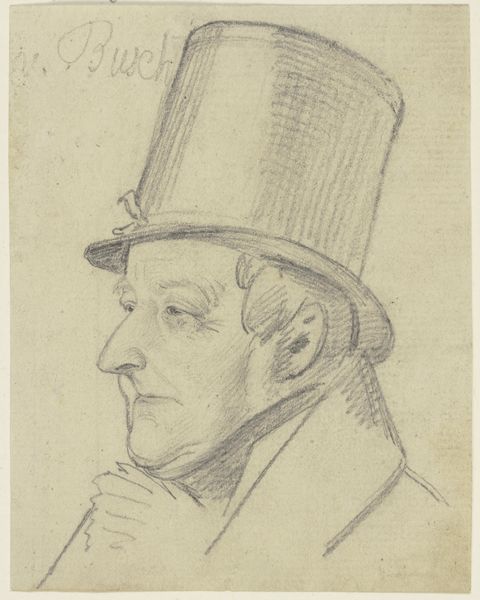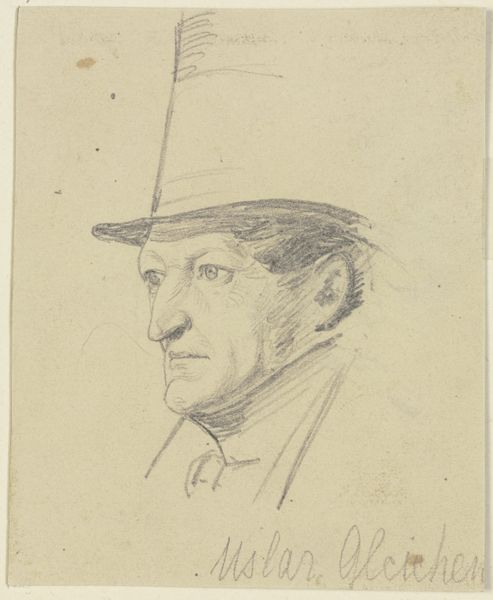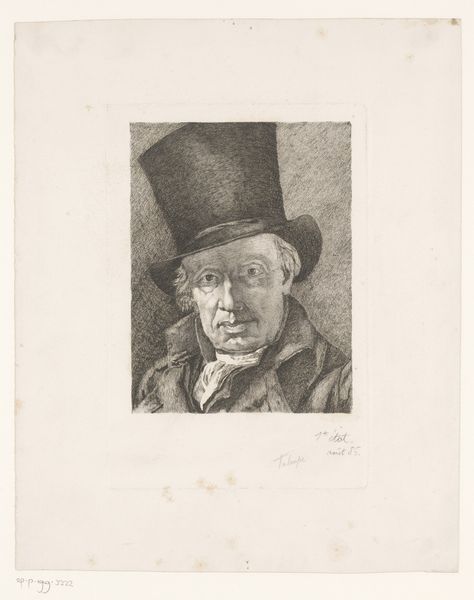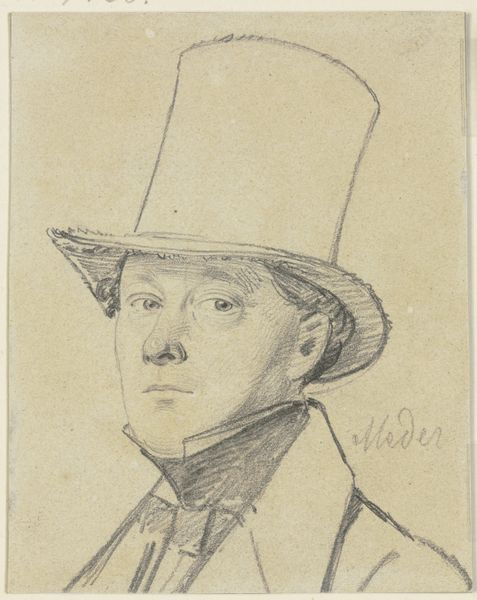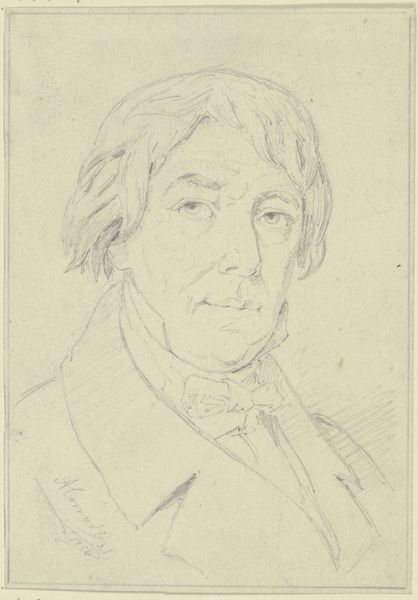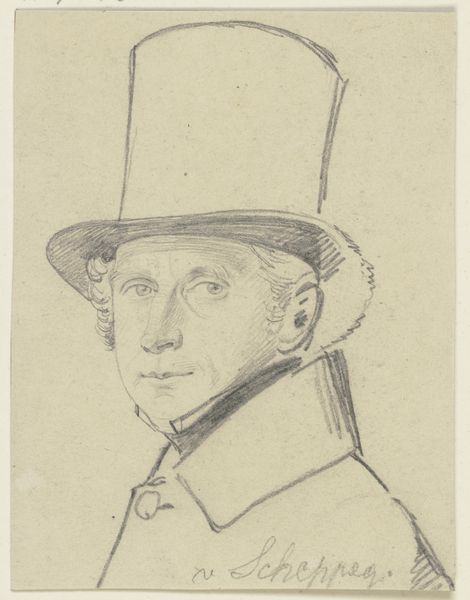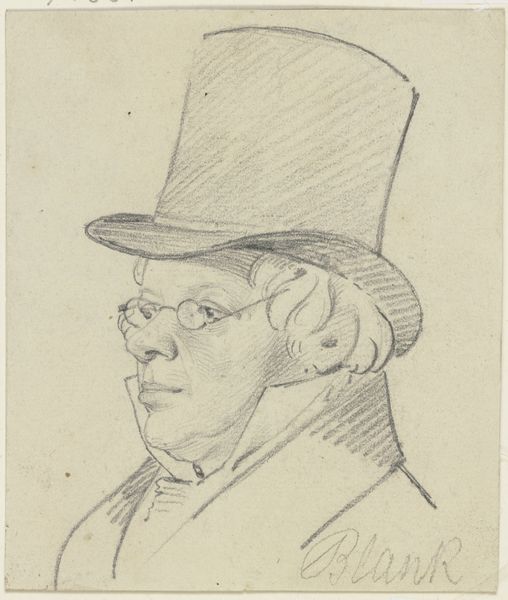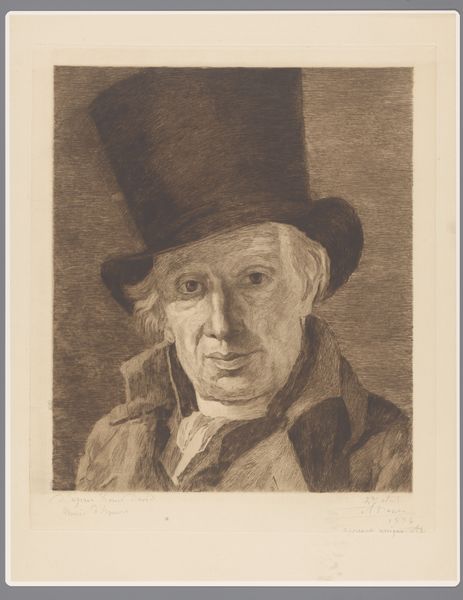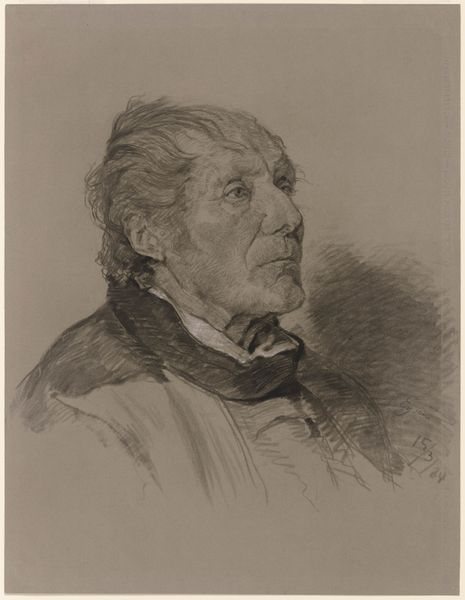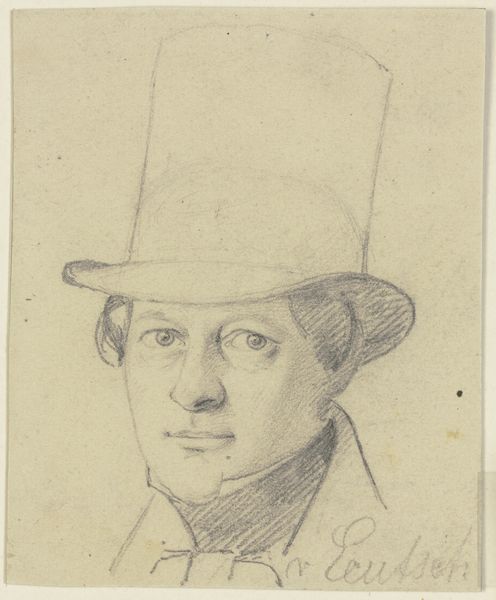
drawing, paper, pencil
#
portrait
#
pencil drawn
#
drawing
#
pencil sketch
#
paper
#
pencil drawing
#
pencil
#
portrait drawing
#
realism
Copyright: Public Domain
Curator: This is Carl Hoff's "Portrait of Vogel," housed here at the Städel Museum. It’s a delicate pencil drawing on paper. What are your initial thoughts? Editor: The first thing that strikes me is its incompleteness. It feels like a fleeting glimpse, a half-remembered figure emerging from the fog. The hat especially, is lightly rendered—it feels precarious, a symbol of status on shaky foundations. Curator: Exactly! It’s all about process, isn't it? Look closely, and you'll see the ghost lines, the artist's search for the perfect contour. This reveals not just a portrait but the labor of portraiture, the back-and-forth between artist, material and sitter. The paper itself, its weave and possible watermarks, speaks to its own history. Editor: Absolutely. Considering that hat, and the man's rather severe gaze, I find myself wondering who Vogel was within the socio-political context of Hoff’s time. What power structures shaped his identity, and how is Hoff complicit, or critical, in representing them? Is the work pointing to larger class disparities or to some hidden truths within this man's persona? Curator: The material limitations arguably enhance this reading. It is only pencil on paper, inexpensive media compared to painted portraits of the wealthy, which may point to a specific commission intended for personal rather than public consumption. This also suggests different social levels or financial limitations of both, artist and sitter. Editor: It's fascinating to consider the interplay of representation and class here. Does this delicate, unfinished quality suggest vulnerability or does the high hat propose influence in ways we are not seeing immediately. Perhaps it hints at the transient nature of power, its reliance on perception rather than inherent substance? How do the techniques of this “mere” drawing challenge ideas and representations of hierarchy and privilege? Curator: We see, in essence, the material underpinnings of social performance, visualized. The drawing's inherent ephemerality, a simple line, is contrasted against the ambition of rendering a figure that attempts to be permanent. This tension itself provides us with clues about consumption of self versus the means of artistic representation. Editor: This pushes us to engage critically with what it means to depict a person, and to really scrutinize all the hidden assumptions around that. So thank you Carl Hoff! Curator: Indeed. Hopefully listeners, this conversation allows for more careful analysis on what constitutes visual representations and to continue on your art viewing.
Comments
No comments
Be the first to comment and join the conversation on the ultimate creative platform.
